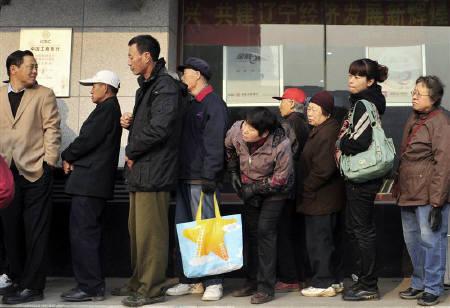In a debt deflation, debt liquidation leads to falling asset prices. As the process continues, the repayments of debt (and default) outpace extension of new credits, meaning that the banking system is destroying money through credit contraction. That means deposits fall, and so does money supply. That leads to sharper falls in asset prices, more repayment and default, contracting money supply, deflation, rinse and repeat.
I speculated yesterday that China is slipping into some version of these dynamics based upon what is happening right now in the monetary statistics, as loan demand appears very weak and both deposits and money supply are falling. Today, I have an anecdote that suggests that the it could well be happening.
Last year, I reported on the shadow banking mess in Wenzhou that led to companies chiefs fleeing and/or killing themselves to avoid being killed by their creditors. The government came in and most thought the crisis was over. Now, the First Financial Daily is reporting a scene happening in banks in Wenzhou that suggests otherwise. Even at a normally non-peak hours in the afternoon, it says, banks are full of people queuing up, not for borrowing money, but repaying debts.
This is a curious scene that suggests the debt deflation process has started in Wenzou, if not nation-wide. According to the report, informal lending in Wenzhou has fallen by 30% compared to last August, and Wenzhou banking sector profits have fallen 53.5% in the first quarter compared to a year ago. In fact, some banks are losing money, which is, according to the report, rare in Wenzhou. The report also mentions that non-performing loans, perhaps not surprisingly, have been on the rise.
The reasons for weak loan demand are just as expected: falling real estate prices and weak economic growth, which is along similar lines around the country. Note, then, that under such circumstances, reserve requirement ratio cuts are not going to be useful at all in stimulating credit growth.
